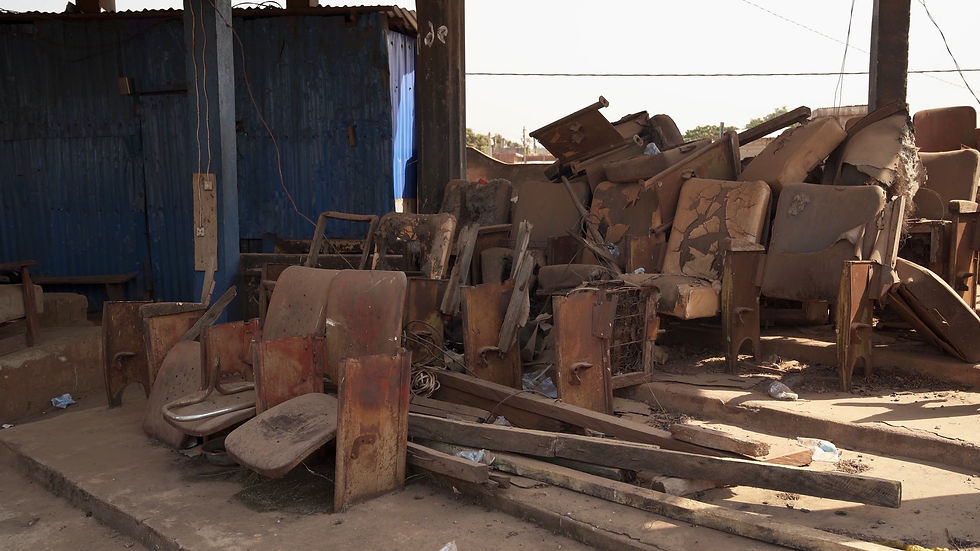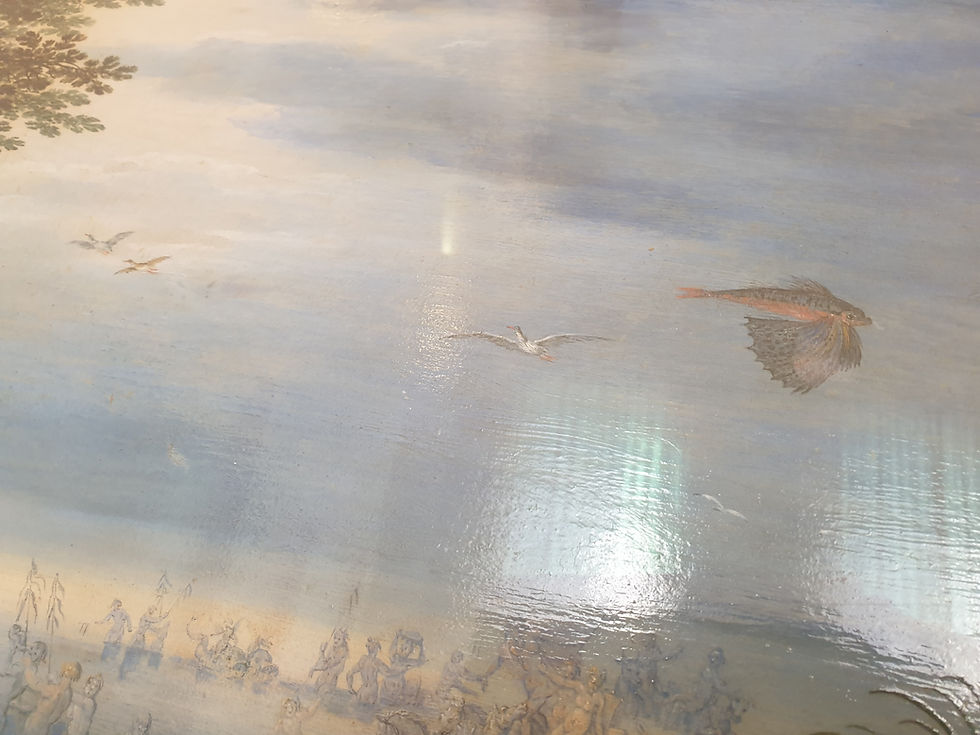CLOWNS, SOUNDS, DERVISH WITH A CAMERA AND... HORRORS
- Marina Drozdova

- Aug 7, 2023
- 5 min read

Berlinale 2023
A friend of mine is doomed to share the chaos of my melomania. To tone down the pathos, he calls Shostakovich — Shotakovich (a play on words, turning the name of this giant-of-music composer into a “shot” glass, hinting at his revelry of sounds). The Berlinale opens with Rebecca Miller’s melodrama-musical, She Came to Me, where a composer jams the mess of his life into an operatic score. Peter Dinklage plays the composer; Anne Hathaway — his psychoanalyst wife.
Along the way, the neurasthenic composes an opera about a lady he accidentally met while roaming in creative anguish. She is a tugboat captain, who slightly suffers from nymphomania, but is otherwise a kind and responsible person, despite hitting her lover on the head with a saucepan. The quite absurdist soundtrack unfortunately falls short of the symphonic happenings of György Ligeti, to whose centenary the Berlin Philharmonic dedicated a series of concerts coinciding with the Berlinale. And thus these concerts offered an accompaniment to the film festival.
Ligeti Biennale was held under the slogan “The simultaneity of different speeds” — this slogan would have fit the Berlinale program just as well. Some compare Ligeti to Shostakovich — not in the scale but rather the desire to bring humor into the symphony. In the movie She Came to Me, humor mostly got stuck in a dead end, a pity. With the exception of the role of Anne Hathaway: she suddenly turned from a sweet beauty into a real hysterical woman from Woody Allen films: stubborn in her ridiculous (comic) confusion. Almost a clown. Very funny.

In addition to the Disney centenary session, the race for symphonic humor included a mysterious documentary named Horse Opera by Moyra Davey. On the screen: a donkey wanders into the frame, or a deer, but most often, horses. They approach the camera closer and closer: we see close-ups of eyes, ears, teeth, tails and hooves. The horses, naturally, think about something of their own, while the character (most likely the director herself) reads instructions on how to survive megacity parties; meanwhile, mirrors of an old farmhouse reflect her preoccupied face. Gradually, the horses start to listen to the kaleidoscope of her whining, and — this is interesting (!) — they seemingly begin to sneer at the texts. The close-ups of their physiognomies suggest so. What self-irony, bravo to the author!

Meet my idol, At the Cemetery of Cinema (Au cimetière de la pellicule) by Thierno Souleymane Diallo. Simple, mischievous, naive (but in a good way — like a Matisse artwork). The director is filming himself: here, he is riding a donkey through the village with a camera at the ready. The donkey’s ears sway in the frame’s foreground; the author’s voice narrates behind the scenes about his obsession to find Guinea’s first documentary film (from 1953). Such a sweet dream any adventurous cinematographer could fancy. Or an excellent example of non-lazy suburban cinema: the donkey’s ears are especially praiseworthy.
Director Diallo, aka the main protagonist, is always barefoot; halfway through the film, he explains that this is a protest against the lack of funding for cinematography in his native Guinea. This splendid mini-novel’s entire narration resembles some pseudo-simplistic collages — Matisse’s perhaps, or some such… Angular and meek, with a slight touch of anecdote. Guinea ceases to come off like a tangible geographical space with real difficult past and present, but becomes a kind of “terrible” place where “evil gnomes” had destroyed cinemas and film archives, letting the mold consume our favorite 35-mm reels. There are no film projectors here, nor editing tables — the characters screen films by hand in the light, deftly distinguish between pornography and propaganda.
In the key episode, Diallo, like a real wandering fakir, plays tricks — with cinematic lessons. He distributes cardboard cameras to children. “…The main thing is to see in your imagination the movie that you want to make; the optics will follow if you understand who, how, and why to lure onto your set.” Here, however, he pays homage to the classic documentarian, Joris Ivens, who once had given wooden cameras to Cuban students.
Note that Diallo, of course, is as cunning as any dervish: while he walks around barefoot and poor, hypnotizing the film like a snake, he himself is being filmed by a whole crew with decent equipment. But that’s why the director is a rogue — the audience is hardly cognizant of any tricks.

Berlinale has always been famous for its active socio-political position, and participating films reflected this focus - by using reportage, metaphor, certain atmosphere (depending on a movie) to respond to all socio-political explosions. The selection of programs this year is different only, perhaps, in the representation of genres - not so much different, per se, but rather that the new “flowers” have blossomed. Non-fiction and fiction are completely mixed; observations turn out to be, for example, musical opuses. Whatever the film, there are always quite a few close-ups of animals and birds looking directly into the camera, that is - at us, the audience. What does this mean? For example, is this a sign of the lack of faith in humanity? Everyone is deep in thought. It might be due to the consequences of the pandemic (imprisonment) season - when the authors were forced to spend too much with themselves, facing their inner thoughts and feelings. Well, the ongoing global disasters change their perception, of course. Many different explanations are possible…

And now to horrors. This year, the most horrifying- in the truest sense of the word - were, perhaps, the films of the documentary diptych by Iranian director Mehran Tamadon "Where God Is Not" and "My Worst Enemy". Both films involve re-enactments of interrogations in Iranian prisons. The director conducts experiments on himself; the films feature former prisoners (mainly journalists) and actors. Actually the film "My Worst Enemy" features the actress Zar Amir Ebrahimi, best known for her Cannes award-winning role in "Holy Spider".
“Iranian” by Mehran Tamadon was screened at Berlinale Forum in 2014, his “Bassidii” received the first award ar Jihlava IFF in 2009. The director considers cinema as “intervention” and achieves controversial results.
Classical Iranian cinematography is a mixture of reality and its reconstruction: the "seams" are invisible. You will never understand where a documentary episode turns into a staged one. Ethical questions, moral scandals, and mutual provocations accumulate in this surreal space of waking dream. At the end, the actress questions the director: “Is it right to make people suffer in the name of cinema?… You are the one who is torturing us with this silly little game!”. The viewer, of course, is also being provoked, but if he holds on to his chair, then perhaps the director attains his goal. And his goal is for the viewers to identify themselves in the space of violence.



Comments